UNITA. The most combat-ready rebels of the “black continent”
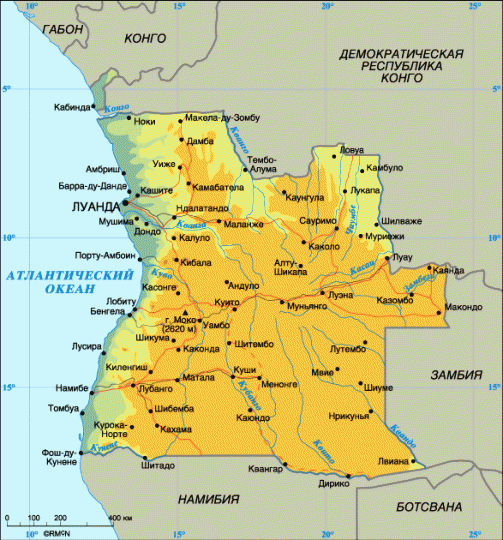 Portuguese outpost of Portugal
Portuguese outpost of PortugalThe civil war in Angola began almost immediately after the proclamation of the country's political independence. For several centuries, Angola was the "pearl" of the Portuguese colonial empire. The coast of Angola was discovered by Portuguese navigator Diogo Can in 1482, and in 1576 the fort of São Paulo di Luanda was laid by the Portuguese in XNUMX and later became the capital of Angola, Luanda. In this way, story the colonial rule of the Portuguese in Angola goes back almost four centuries. It was Angola that became the main source for the sending of slaves to Brazil. In the history of the Portuguese slave trade, at least five million Angolans were taken to the New World. The main Portuguese trading posts were on the coast, that part of the Angolan population lived here, which for the longest time had been in close contact with the Portuguese colonialists and for centuries adopted the Catholic religion, the Portuguese language and many elements of the Portuguese way of life. Until the XIX century, the Portuguese controlled only coastal areas, and in the inner part of Angola, expeditions were periodically launched to capture slaves. Moreover, the Portuguese themselves preferred not to participate in these expeditions, but sent slaves of their co-workers from among the representatives of the coastal tribes, who received from the Portuguese the necessary weapon and equipment. In the 19th century, the development of the internal territories of Angola began, and in the 20th century, Angola became one of the Portuguese colonies most exploited in terms of the extraction and export of natural resources.
In the Portuguese colonies in Africa, there was a specific form of division of the local population into two categories. The first was the so-called. “Asimilados” - mulattoes and Africans who knew Portuguese, knew how to read and write, professed Catholicism and adhered to the European way of life. Of course, only a very small category of the population of the colonies met the listed criteria, and it was she who became the basis for the formation of the colonial bureaucracy, the intelligentsia and the bourgeoisie. Most Africans belonged to a different category - “indizhenush.” It was the “indiznush” that was subjected to the most discrimination in the colonies, carried the main burden of labor duties, of which “contractadush” were recruited - workers on plantations and mines that signed the contract but were actually in slave condition. Among the native population, rebellions against the Portuguese colonialists often broke out, which were severely suppressed by the colonial forces. On the other hand, among the educated part of the native population, there was also growing discontent with the orders that dominated the colony. It is precisely Asimilados, due to access to European education, that had the opportunity to form their own ideas about Angola’s future. Moreover, they were not deprived of ambitions and the role of colonial officials suited them less and less - because the level of education allowed to lay claim to leadership positions in autonomous, and even independent Angola. In 1920 - 1930 - s. among the Asimilados in Luanda, the first circles of anti-colonial orientation appear. The first political organization of the colony was the Angolan League, which advocated the improvement of working conditions for representatives of the native population. In 1922, it was banned by the colonial administration. However, protest sentiments among the part of the bureaucracy, intellectuals, and even servicemen of the colonial troops of African descent increased.
Bakongo traditionalists and mbundu marxists
A new stage of the anti-colonial struggle in Angola began in the late 1940-x - the beginning of the 1950-x. The results of the Second World War gave hope to the liberation of many Asian and African peoples, among whom were Angolans. In Angola, the first serious political organizations appeared that advocated the proclamation of the country's independence. The first of these, the Union of the Peoples of Northern Angola (UPNA), was created in 1954, and in 1958 was renamed the UPA, the Union of Peoples of Angola. Its leader was Holden Roberto (1923-2007), aka Jose Gilmore, a descendant of the royal Congolese tribe of the Bakongo tribe.
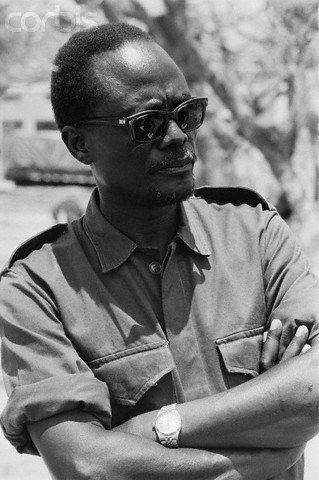 Childhood and adolescence Jose Zhilmore passed in the Belgian Congo, where his parents moved from Angola. In the same place, young Jose graduated from a Protestant school and worked in financial institutions of the Belgian colonial administration. The leader of the Union of the Peoples of Angola adhered to the traditionalist views on the future of his homeland — he wanted to free her from Portuguese domination and restore the kingdom of Bakongo. Since Holden Roberto was a Bacongo tribal nationalist, he sought only to establish a kingdom in Northern Angola. The rest of the country was of little interest to him. He considered the enemies of the future kingdom not only white Portuguese colonists, but also representatives of other African tribes who did not belong to Bakongo. Thus, the Union of the Peoples of Angola under the leadership of Holden Roberto adhered to right-wing and monarchist ideology and sought to revive African traditions, right down to ancient cruel rituals.
Childhood and adolescence Jose Zhilmore passed in the Belgian Congo, where his parents moved from Angola. In the same place, young Jose graduated from a Protestant school and worked in financial institutions of the Belgian colonial administration. The leader of the Union of the Peoples of Angola adhered to the traditionalist views on the future of his homeland — he wanted to free her from Portuguese domination and restore the kingdom of Bakongo. Since Holden Roberto was a Bacongo tribal nationalist, he sought only to establish a kingdom in Northern Angola. The rest of the country was of little interest to him. He considered the enemies of the future kingdom not only white Portuguese colonists, but also representatives of other African tribes who did not belong to Bakongo. Thus, the Union of the Peoples of Angola under the leadership of Holden Roberto adhered to right-wing and monarchist ideology and sought to revive African traditions, right down to ancient cruel rituals. 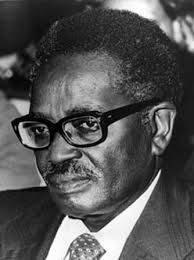 Another organization - the Popular Movement for the Liberation of Angola - the Labor Party (MPLA) - was created in 1956 in Luanda and from the very beginning of its existence it belonged to the left flank of Angolan politics, focusing on the socialist path of development. At the outset of the MPLA stood Agostinho Neto (1922-1979) - the son of a Protestant pastor who lived in Portugal from 1947 and studied at the University of Lisbon and then at the Faculty of Medicine at the University of Coimbra, who graduated from 1958 during his studies in Portugal Agostinho Neto was fond of poetry, studied the works of Neopold’s founders Leopold Sedar Senghor and Aime Sezer, and then he adopted Marxist ideas. By Angolan standards, Neto was a very educated man. However, in the leadership of the MPLA there were initially many representatives of the Moscow intelligentsia, including mulattoes. The preparation of MPLA partisans with the participation of the Soviet Union, China and Cuba, the supply of weapons and equipment began with 1958.
Another organization - the Popular Movement for the Liberation of Angola - the Labor Party (MPLA) - was created in 1956 in Luanda and from the very beginning of its existence it belonged to the left flank of Angolan politics, focusing on the socialist path of development. At the outset of the MPLA stood Agostinho Neto (1922-1979) - the son of a Protestant pastor who lived in Portugal from 1947 and studied at the University of Lisbon and then at the Faculty of Medicine at the University of Coimbra, who graduated from 1958 during his studies in Portugal Agostinho Neto was fond of poetry, studied the works of Neopold’s founders Leopold Sedar Senghor and Aime Sezer, and then he adopted Marxist ideas. By Angolan standards, Neto was a very educated man. However, in the leadership of the MPLA there were initially many representatives of the Moscow intelligentsia, including mulattoes. The preparation of MPLA partisans with the participation of the Soviet Union, China and Cuba, the supply of weapons and equipment began with 1958. In 1961, an armed struggle against the Portuguese colonialists began in Angola. However, the unity of actions of the existing political organizations of anti-colonial orientation was not achieved. Holden Roberto, leader of the FNLA - National Front for the Liberation of Angola, as the Union of the Peoples of Angola became known as 1962, after uniting with the Democratic Party of Angola, rejected any possibility of cooperation with the left of the Marxist MPLA and claimed to be the only legitimate leader of the country's national liberation movement. However, the armed forces of FNLA were not distinguished by their multiplicity and high combat effectiveness, therefore the front acted on a very limited territory. His raids were marked by cruelty to the Portuguese population and to Africans who did not belong to the Bakongo people. In Luanda FNLA, an underground unit was set up that launched terrorist acts against the colonial administration. External support for FNLA was carried out by neighboring Zaire, whose president Mobutu Sese Seko was impressed by the traditional ideology of the front.
The MPLA played a more active role in the anti-colonial war. The Angolan Left enjoyed considerable financial and logistical support from the countries of the socialist camp, primarily the USSR, Cuba, China, Czechoslovakia, and the GDR. Cuban and later Soviet military advisers trained MPLA fighters. Weapons and ammunition were supplied to Angola. Unlike FNLA, which relied on Bakongo, the MPLA had support among the mbundu people and among the urban population in Luanda and some other major cities in the country.
In 1966, in the anticolonial war in Angola, a third player appeared, whose significance in the history of the country, however, will increase only after a decade. UNITA - National Union for the full independence of Angola. It was a left "breakaway" from the FNLA and, perhaps, the most original and interesting in ideological and political practice, the military organization of Angola. UNITA consisted almost exclusively of representatives of the Ovimbunda people (southern mbundu). This nation belongs to the Bantu group and inhabits the provinces of Benguela, Huambo, Bie on the Bie Plateau. In 2000, the number of ovimbundu was about 4-5 million. Of course, the leader of the UNITA, Jonas Maleira Savimbi, was also the representative of the Ovimbunda nation.
Dr. Savimbi
One of the brightest figures in the modern history of Angola, Jonas Malleira Savimbi was born in 1934 in the family of a railway employee of the Benguela railway and a Protestant preacher of the congregation of evangelicals in combination with Lotte Savimbi. Jonas' grandfather was Sakaite Savimbi - one of the leaders of the Ovimbunda people, who led an uprising against the Portuguese colonialists in 1902, and for this he was deprived of the status of the leader and his vast lands by the colonial administration. Perhaps this insult to the Portuguese played an important role in the formation of anti-colonial views in the Savimbi family. Junior Jonas Savimbi showed remarkable academic success, gaining the right to a scholarship and receiving an appointment in Portugal for admission to the medical faculty of the University of Lisbon. But already in his youth, Savimbi was distinguished by anti-colonial views. He was expelled from the university after he refused to undergo a political training course based on the concept of salazarism and luzotropicalism (a concept justifying the colonialist mission of Portugal in tropical countries). Once in sight of the Portuguese political police PIDE, Jonas Savimbi in 1960 was forced to move to Switzerland, where he continued his studies at the University of Lausanne, this time at the Faculty of Political Sciences.
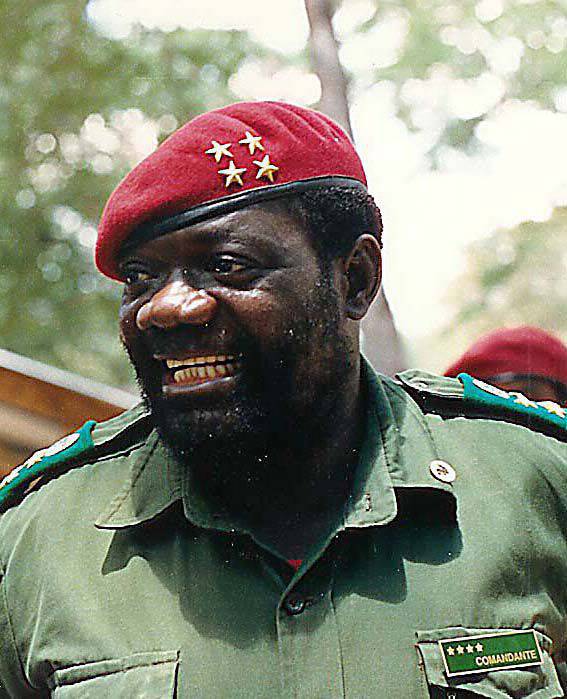
While studying in Europe, Savimbi met many future political leaders of Portuguese-speaking Africa, including Amilcar Cabral and Agostinho Neto. However, unlike Agostinho Neto, Savimbi did not take the Marxist ideology. It seemed to him alien to African reality, which did not reflect the true needs of the Angolan people. At the same time, Savimbi was also critical of the Angolan Right, who insisted on the need for a revival of African tribal monarchies. Much more than Savimbi was attracted by the left-radical phraseology of Maoism, which the future leader of UNITA combined with sympathies for the concept of the Negrodude Senegalese philosopher and poet Leopold Sedar Senghor. For a long time, Savimbi did not dare to join either of the largest political organizations of the then Angola - neither the UPA (the future of FNLA) nor the MPLA. MPLA Marxists irritated Savimbi with the desire to bring to the African land another alien ideology. In addition, he was suspicious of the origin of many prominent figures of the MPLA, the mulattoes, in whom Savimbi saw guides of colonial influence. Finally, Savimbi was displeased with the MPLA’s overly pro-Soviet orientation and viewed it as a desire to establish in Angola the actual control of the “new imperialists” - this time the Soviet.
Returning to Angola, Savimbi eventually, shortly before the armed uprising in Luanda 4 February 1961, joined the Angolan Alliance of Peoples of Holden Roberto, soon transformed into the National Front for the Liberation of Angola. In the ranks of FNLA, Savimbi quickly became one of the leading activists. Holden Roberto sought to enlist the support of ovimbunda, among whom Savimbi was universally popular, and therefore included him in the Revolutionary Government of Angola in exile (GRAE) as Minister of Foreign Affairs. Many African leaders, who held the positions of African nationalism, welcomed the entry of charismatic Savimbi into the top leadership of FNLA, because they saw in this a significant strengthening of the only organization capable of becoming a worthy competitor to the pro-Soviet MPLA in Angola. But Savimbi himself was unhappy with his participation in the Holden Roberto organization. First, Holden Roberto was on the right-wing radical and monarchical positions, and Jonas Savimbi was a radical left-wing Maoist and a supporter of African socialism. Secondly, Roberto dreamed of reviving the tribal kingdom of Bakongo, and Savimbi sought to liberate all of Angola and create an African socialist state on its territory. In the end, the ways of Holden Roberto and Jonas Savimbi diverged. In 1964, while still the foreign minister of the Roberto government, Savimbi traveled to Beijing. Here he was able to get closer to the ideology of Maoism, as well as receive guarantees of military assistance to the PRC. After this, Savimbi officially announced his withdrawal from GRAE and FNLA. The Ovimbunda leader tried to find common points of contact with Agostinho Neto, whom he had known while studying in Portugal, but their views on the partisan resistance and on the future of sovereign Angola turned out to be so different that, despite the support of Savimbi’s candidacy as a deputy to the Soviet Communists, Jonas refused to cooperate with MPLA.
UNITA creation
13 March 1966 was held in the village of Muangai, in the province of Moxico, held a conference of representatives of radical resistance - mainly from among the ovimbunds, where, at the suggestion of Jonas Savimbi, the National Union for the Total Independence of Angola - UNITA was created. Unlike other organizations of partisan resistance - the traditionalist FNLA, which expressed the interests of tribal leaders and elders, and the Marxist MPLA, formally focused on the power of the urban proletariat, but actually expressed the interests of the left intelligentsia, the new organization of UNITA demonstratively oriented itself to the most disadvantaged segments of the Angolan population - the poorest peasantry . The ideology of UNITA included Angolan nationalism, the socialist doctrine of Maoism, and the more narrow nationalism of Ovimbundu. Seeking to ensure the realization of the interests of the ovimbunda peasantry, Savimbi advocated the development of community self-government based on African traditions. At the same time, like Holden Roberto, Savimbi had great respect for traditional African cults and rituals, although the UNITA ideology also included a significant Christian component. Maoist views of Jonas Savimbi provided UNITA with support from China, which saw the organization as an alternative to the pro-Soviet MPLA and sought to bring Angola under its control by supporting UNITA. When Savimbi visited China, he agreed to organize the training of his militants in the training centers of the People’s Liberation Army of China, where Chinese instructors trained Angolan revolutionaries in guerrilla warfare tactics. Savimbi was impressed by the concept of Mao Zedong and the orientation towards the peasantry as the driving force of the partisan movement, which allowed to put into practice the famous concept of “the village surrounds the city”. In accordance with the Maoist doctrine, partisan foci in the countryside gradually turned into liberated areas, whence followed the attack on the urban centers, which were surrounded by partisans from all sides.
The rivalry in Angola at once of three major military-political organizations - MPLA, FNLA and UNITA - led to the fact that Angola achieved political independence more likely thanks to the Portuguese revolution of 1974 than to the military successes of the partisan armies. After the revolution in Portugal, Jonas Savimbi, seeking to increase his political influence and improve his image in the world, signed a cease-fire agreement with the Portuguese military command. This gave its results - Jonas Savimbi represented Angola in negotiations with Portugal on granting the political independence of the former colony. The leader of UNITA, therefore, became one of the most popular Angolan politicians and could seriously expect to win if presidential elections were held in sovereign Angola. In January, 1975 in Kenya hosted a meeting of the leaders of the three leading Angolan military-political organizations, at which they reached an agreement on the formation of a coalition government, whose task was to create future authorities, the armed forces and the police of sovereign Angola. However, a peaceful life in sovereign Angola was not destined to begin. Despite the fact that the official declaration of independence of Angola was appointed on 11 in November 1975, in the summer of 1975 relations between FNLA and UNITA on the one hand, and the MPLA on the other side, seriously worsened. None of the military-political organizations of Angola was going to simply give their rivals a chance to come to power in the country. First of all, the leadership of the MPLA did not want the representatives of UNITA and FNLA to enter the coalition government, as it violated plans to create a socialist-oriented state from Angola and promised big problems with the Soviet patrons, who sent money to the leaders of the MPLA in the hope that they would take power into their own hands and neutralize the "reactionaries" from rival organizations.
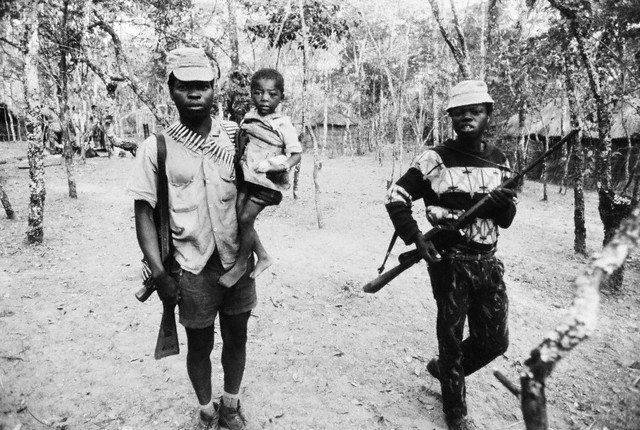
The beginning of the civil war in Angola
In July, street battles broke out between the armed forces of the MPLA, FNLA and UNITA in Luanda, 1975 in Luanda. Since the main influence areas of FNLA and UNITA were located in other regions of Angola, and Luanda and its environs were within the sphere of political influence of the MPLA, Angolan Marxists succeeded in defeating Holden’s supporters Roberto and Jonas Savimbi without much effort and forced them to retreat from the Angolan capital. After that, all plans to build a peaceful life in Angola were violated. The civil war began. FNLA under the leadership of Holden Roberto tried to break into Luanda on the eve of the appointed day of independence, to prevent the transfer of power in the country in the hands of the representatives of the MPLA. However, on the night of 11 in November 1975, FNLA units suffered a serious defeat on the approach to Luanda and were forced to retreat. It is noteworthy that the Cuban Expeditionary Corps, which was hastily sent to Angola by Fidel Castro, who also supported the MPLA, played a leading role in the rout of the FNLA forces. Despite the fact that on the side of FNLA were units of the army of neighboring Zaire, where Holden’s ally Roberto was ruled by Marshal Mobutu, as well as groups of European mercenaries, the MPLA’s armed forces managed to prevent Roberto’s breakthrough into Luanda, and by January 1976 completely defeated the armed forces Fnla. Jonas Savimbi in this situation decided on a paradoxical step - he asked for help from the Republic of South Africa. Among African states with the Negro population of South Africa, where the apartheid regime dominated, was considered a taboo country for close relations, Savimbi ventured to break the taboo and, being an African nationalist, ask for help from white racists. The ruling circles of South Africa, who were extremely afraid of the communists coming to power in Angola, who would be able to support the African National Congress in South Africa itself, gave the go-ahead for the introduction of the South African contingent into Angola. However, in March 1976, the South Africans also left Angola. Jonas Savimbi and his UNITA were left alone with the pro-Soviet government of the MPLA, which proclaimed the creation of the People’s Republic of Angola.
Unlike the troops of Holden Roberto, who suffered a crushing defeat from the MPLA and actually left serious Angolan politics, Jonas Savimbi managed to create an effective and efficient structure. UNITA has become one of the best partisan armies in the world. UNITA units took control of entire regions in the east and south-east of Angola, which were of strategic importance due to the presence of diamond deposits there. Illegal diamond mining and exporting has become the basis of UNITA’s economic well-being. The political leadership of UNITA is located in the city of Huambo, then in Bailundo, and the military command is located in the city of Jamba. In fact, UNITA has become the only anti-government military-political organization capable of adequately opposing the regime of the MPLA militarily and politically. Jonas Savimbi himself has become a symbol of the Angolan insurgency and gained worldwide fame as one of the most consistent representatives of the world anti-communist movement. Paradoxically, while positioning himself as a staunch anti-communist and closely cooperating with American intelligence agencies, Savimbi, nevertheless, in his personal political convictions, still remained a radical left, combining Maoism with African socialism. He referred to his partners in the world anti-communist movement - right-wing "contra" from Nicaragua, Lao anti-communist partisans of the Hmong ethnicity, Afghan mujahideen, Savimbi treated with poorly concealed disregard, considering them reactionaries, but forced tactical fellow travelers. However, it was in Jumbo - the military residence of UNITA - that the meetings of the International Democratic International took place - a political organization created by Afghan, Angolan, Laotian, Nicaraguan and American anti-communists.
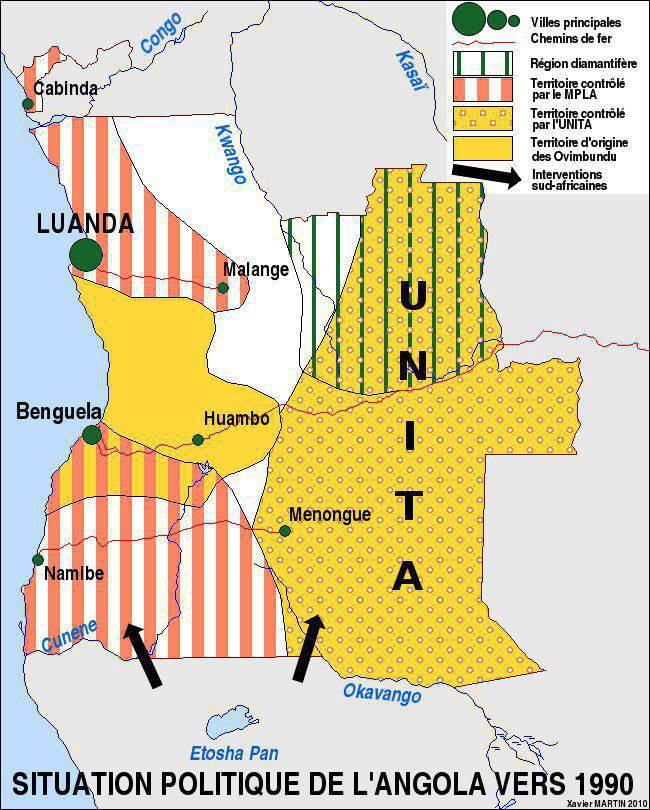
Belonging to the world anti-communist movement did not prevent UNITA from proclaiming itself to be the spokesman for the interests of the very poor of Angola’s population — the black peasantry of the inner provinces. According to Savimbi’s view of the current political situation in Angola, after the MPLA’s accession to power, the colonialist order in the country has not been eliminated. The top of the MPLA was made up of well-to-do asimilados and mulattoes who acted in the interests of transnational corporations plundering the national wealth of the country and exploiting its population. Savimbi saw true Angolans in the black inhabitants of the villages, and not in the Europeanized mulattoes and “Asimilados” from the large cities that formed the basis of the MPLA political electorate.
UNITA structure and military successes
Sergey Kononov, in a small but very interesting article devoted to analyzing the internal structure of UNITA based on Cuban sources, reports that the structure of UNITA as a political party included leadership — a central committee of 50 people, a political bureau of the central committee of 13 members and 3 candidates a committee of five senior executives. In the provinces, the supreme body of UNITA is the provincial assembly, in the districts the district assembly, in the villages the village assemblies. The UNITA government includes foreign affairs secretaries, each of whom is responsible for the most important areas of international cooperation - the USA, France, Portugal, Switzerland, Gabon, Senegal, Ivory Coast, Zaire, Zambia, Morocco. The position of party chairman, commander-in-chief of the armed forces and president of Angola in the UNITA structure was held by Comandante Jonas Savimbi. The chief of the general staff was General Deostenos Amos Shilingutila, the national political commissar - Geraldo Sashipengou Nunda. The UNITA military forces were divided into six military-political fronts — Cazombo, the Second Strategic Front, the Central Front, Kwanza and Kubango. In 1977-1979 UNITA had 4 military-political fronts, in 1980-1982. - 8 fronts, in 1983-1984's. - 6 fronts. The fronts included the 22 military district. By 1983, the UNITA troops included 6 infantry brigades and 37 battalions. The total number of organization fighters was about 37 000 people. The structure of the UNITA infantry brigade, according to Kononov, was as follows: command from the 7 man — the brigade commander, commissar, deputy commander, artillery commander, air defense chief, intelligence chief and communications commander. The brigade consisted of an 3-4 infantry battalion, a logistics rear support platoon, a guard platoon, a sabotage detachment, an artillery platoon and an air defense platoon. The UNITA infantry battalion, in turn, numbered the 450 man and included command (the battalion commander, deputy commander, political worker), three infantry companies numbering up to 145 man, the support company. Each company included three platoons of 41-45 people, consisting of three sections of 15 people. Each branch was divided into three groups of five people.
The national defense team was responsible for intelligence and counterintelligence operations in UNITA. At the head of the brigade were the commander, his deputies in the administrative and technical part. The brigade consisted of a department of financial control, a department of postal control, an archive, and intelligence and sabotage units. The technical units consisted of an 1 demining group of 4-6 people and an 1 sabotage group of the same size. The intelligence units consisted of 4-6 intelligence officers, each of whom had up to three agents. UNITA scouts were trained in special reconnaissance and sabotage schools. It should be noted that intelligence and counterintelligence activities were very well placed in UNITA, otherwise the guerrilla organization would not have been able to stand up to government forces and the Cuban expeditionary force and Soviet military advisors that helped them for so long and effectively.
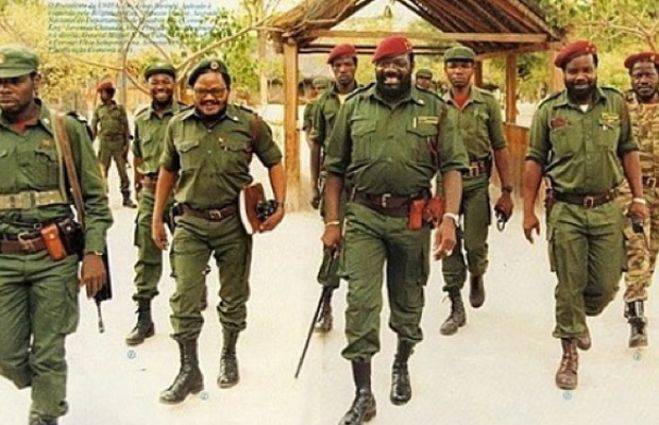
For the period from 1975 to 1991. the leadership of the MPLA did not succeed in suppressing the partisan resistance waged by UNITA. When Cuban troops were withdrawn from Angola, and the Soviet Union, which had begun perestroika and gradually reorienting to normalize relations with the countries of the West, also began withdrawing military specialists and ending such large-scale military assistance, it became increasingly difficult to resist UNITA. UNITA achieved maximum success in 1989, managing to break into the vicinity of the capital and even strike Luanda. But the MPLA regime managed to save power. In the conditions of the collapse of socialism in the USSR, the Angolan leadership as quickly as possible realized which line of conduct would be most beneficial for him and allow him to maintain power. The MPLA abandoned the course of socialist orientation and began to develop relations with the United States and the countries of Western Europe. The latter, being interested not so much in ascertaining the ideological preferences of the Angolan leadership, but in concrete economic ties, gradually began to curtail support that had previously been rendered to UNITA. At the same time, the MPLA government was forced to negotiate with the UNITA command, which ended with the signing of the 31 in March of the 1991 of the Lisbon Peace Agreement.
Failed peace attempt and renewed war
In 1992, Mr. Jonas Savimbi nominated his candidacy for the presidential elections in Angola and, according to official data, received 40% of the votes, while the current president and leader of the MPLA, José Eduardo dos Santos - 49,6% of the votes. However, UNITA refused to recognize the results of the presidential election. The hope of a peaceful settlement of the situation in Angola and the construction of a multi-party democracy with the participation of UNITA again turned out to be elusive. The UNITA leaders, who arrived in Luanda, expressed sharp disagreement with the election results and threatened to launch resistance. The response was followed by an unexpectedly harsh reaction from the MPLA, known as "The Halloween Massacre." October 30 1992 The MPLA party militia attacked UNITA activists, killing several top party leaders. Mass killings of opposition supporters began in Luanda, carried out primarily on ethnic grounds - MPLA supporters killed representatives of the Ovimbundu and Bakongo peoples who supported UNITA and FNLA. The total number of victims of the three-day massacre was at least 10 thousand people, and according to some data reached 30 thousand people.
After the Halloween Massacre, the UNITA command had no choice but to renew the armed struggle against the regime. Government forces were hit hard. Despite attempts at a peaceful settlement, the parties did not reach a mutual agreement. However, in the second half of the 1990's. UNITA was no longer successful. The US refusal to support UNITA significantly weakened its logistical and financial capabilities, and most importantly, made it impossible to exert political pressure on Luanda. On top of that, some UNITA top leaders, who had bothered to fight in the jungle for several decades, preferred to dissociate themselves from Savimbi and come to a peace agreement with the government. 24 December 1999. Government forces managed to knock out UNITA armed units from the main military residence, the city of Jamba. Jonas Savimbi, commenting on the current situation, stressed that the United States needed an ally in the fight against Soviet expansion on the African continent. But when the threat from the Soviet Union was gone, UNITA became a danger to American interests.
The death of Savimbi and the fate of UNITA
After the capture of Jamba, Savimbi, with the remnants of his troops, moved to the regime of constant movements through the Angolan jungle. In February 2002, Jonas Savimbi made the transition through the province of Moxico, but was tracked down by the troops of General Karlitos Vala’s government forces. Together with Savimbi there were twenty two of his closest comrades. The 68-year-old Angolan revolutionary himself actively resisted, received fifteen gunshot wounds in a shootout with special forces and died with a weapon in his hands. However, he himself discovered exactly such an end for himself: “I will die not in a Swiss clinic and not from an illness. I will die a violent death in my own country. " The UNITA leader was buried in the city of Luena.
Savimbi's successor, who led UNITA in February-March 2002, was General Antonio Sebastian Dembo (1944-2002), who was considered the closest ally of Jonas Savimbi and a supporter of the continuation of armed resistance to UNITA. After graduating from engineering education in Algeria, António Dembo joined UNITA in 1969, and in 1982 he became commander of the Northern Front. In 1992, after the assassination during the Halloween Massacre of Jeremias Sheetundy, Dembô became Jonas Savimbi’s deputy, while he also led the commando of the rebel armed forces. Savimbi was very sympathetic to Dembo, although the latter was not ovimbundu by nationality. It was Dembo Savimbi who called his successor in case of sudden death or death. Dembo, like his senior comrade, was in ultra-radical positions and opposed a compromise with the MPLA, in which he saw exploitative and hostile force to the Angolan people. 22 February 2002 was injured during a battle in Moshiko near Savimbi Dembo, but he managed to avoid arrest. Two days later, the seriously wounded Dembo published a statement in which he stated that "those who think that the ideals of UNITA have died with the leader are mistaken." However, a few days later, Dembo himself died from his wounds, his death was confirmed by the UNITA leadership of 5 in March of 2002.
Those who succeeded António Dembo in the UNITA leadership, Paulo Lukamba and Isayash Samakuve, accepted the conditions of the MPLA and refused to continue the fighting. Paulo Lukamba, also known as “General Gato” (“General Cat”), held talks with the leadership of the MPLA, which resulted in an agreement to end the armed resistance. In exchange for rejecting claims to power in the country, Lukamba and other UNITA leaders received guarantees of inclusion in the political elite of Angola. Lukamba, in particular, became a member of the Angolan parliament. Thus ended the history of the transformation of one of the most battle-worthy and radical partisan movements of the world into a system political party, whose role in the political life of Angola is not so great. After the end of the civil war, Angola was able to restore the economy and is now one of the fastest growing countries in the continent.
Materials used:
1. Kolomin S. Special Operations: The End of the Black Rooster // http://www.bratishka.ru.
2. Kononov S.P. The structure and activities of UNITA // http://www.veteranangola.ru.
3. Lavrenov S. Ya., Popov I. M. The Soviet Union in local wars and conflicts. M .: ACT; Astrel, 2003.
4. Tokarev A. “Black Rooster” of Angola // http://www.veteranangola.ru.
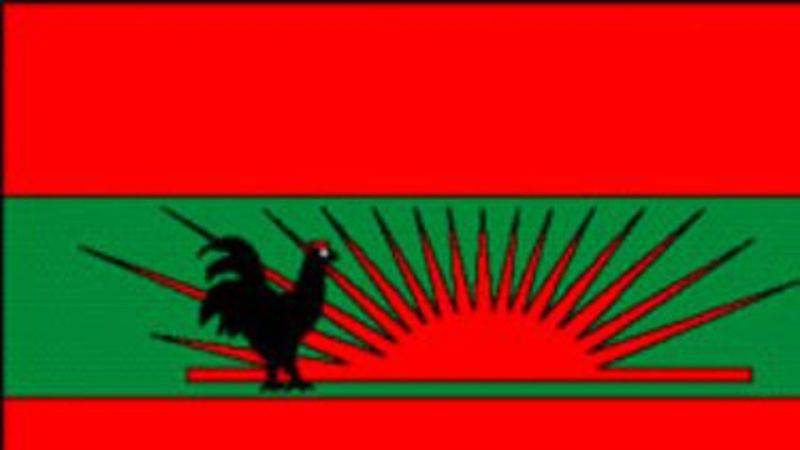
Information